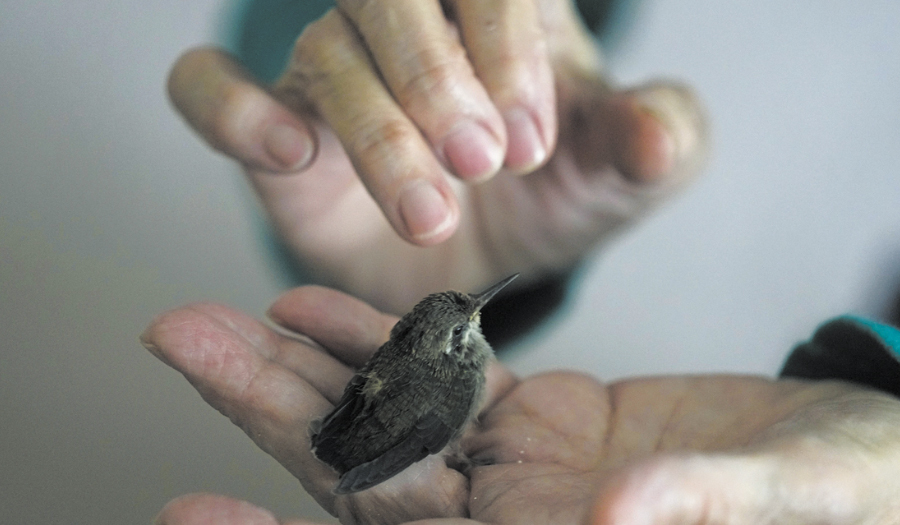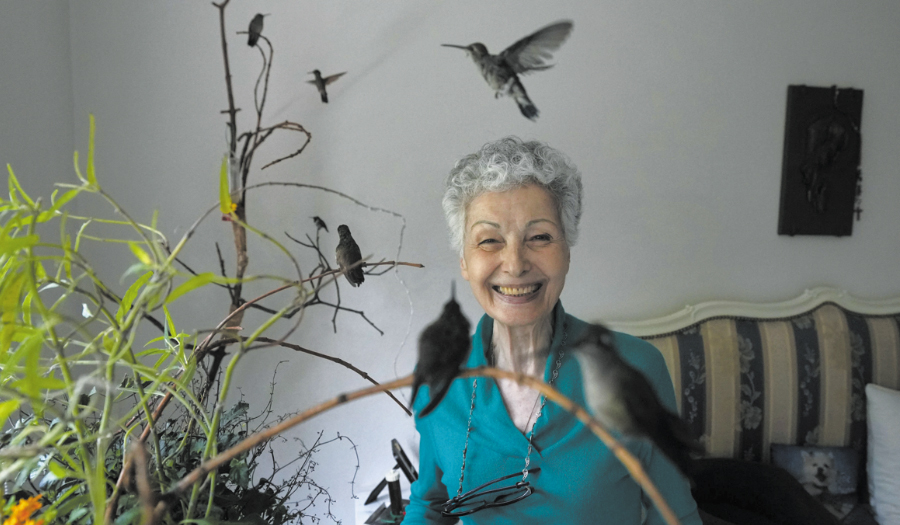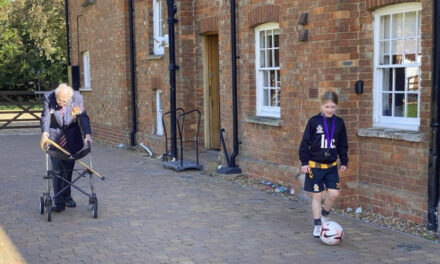Mexico City (AP) – Gently holding a baby hummingbird between her hands, Catia Lattouf says, “Hello, cute little guy. Are you very hungry?” It’s the newest patient at her apartment in a toney section of Mexico City where she has nursed hundreds of the tiny birds back to health over the past decade.
Under Lattouf’s caress, the bird relaxes little by little, allowing her to evaluate it. A young man who rescued it after it fell from a nest onto his patio watched attentively.
“It is a broad-billed hummingbird,” the 73-year-old Lattouf said, as she moved an eyedropper to its beak. “Oh, mama, you want to eat!”
This is often how Lattouf’s days have gone since she turned her apartment in Mexico City’s Polanco neighborhood into a clinic for sick, injured or infant hummingbirds, about 60 of which currently flit around.
Lattouf, who studied French literature, has become a reference source for bird lovers, amateur and professional alike, across Mexico and other parts of Latin America.
Her improvised clinic also supports more formal institutions like the Iztacala campus of Mexico’s National Autonomous University, which sometimes refers cases to her due to a lack of resources, time and space, said one of its researchers, the ornithologist María del Coro Arizmendi.
Arizmendi said there are 22 species of hummingbird in Mexico’s sprawling capital, of which the broad-billed and the berylline hummingbird are the most common. In Mexico, there are some 57 species and around 350 across the Americas.
With dozens of the tiny birds buzzing overhead, along walls and the window of her bedroom, Lattouf explained that she began caring for them a year after surviving colon cancer in 2011. It started with one hummingbird that had an eye injured by another bird.
A veterinarian friend encouraged her to try to help it. She named it Gucci after the brand of the glasses case she kept it in. The bird became her inseparable companion, perching on her computer screen while she worked.
“It wrote me a new life,” she said of the nine months the bird lived with her.
It helped pull Lattouf out of the sadness and loneliness she had experienced after her husband’s 2009 death followed by her own bout with cancer. Her illness had pushed her to sell her five high-end boutiques to focus on her recovery.
Later, friends and acquaintances began bringing her more hummingbirds. She began studying how to better care for the birds that are native to the Americas and usually weigh just 4 to 6 grams (a fifth of an ounce or less) and are about 10 to 12 centimeters long (4 to 5 inches long).
 “Most come to me as babies. Many come to me broken,” she said.
“Most come to me as babies. Many come to me broken,” she said.
Some have injuries to wings after colliding with things or falling from nests. Some have infections from drinking contaminated water from hummingbird feeders, which are popular in the city.
Since May, the demand for her services has jumped. Someone put a video about her work on the social platform TikTok that has been viewed more than 1.5 million times.
Lattouf says she never turns away a bird. Together with her collaborator Cecilia Santos, who she calls the “hummingbird nanny,” they care for the birds in long days that stretch from 5 a.m. into the night.
Most of the hummingbirds are in the bedroom where Lattouf sleeps. They stay there until they are strong enough to fly and feed themselves. Then she moves them to a neighboring room to prepare them to eventually be freed. Their release comes in a wooded area on the city’s southside.
Many of them do manage to return to the wild, but the ones who die under Lattouf’s care are buried near her building between small plants.
The city is filled with threats to hummingbirds. There are the sleek black grackles that attack the birds and destroy their nests, as well as constant construction projects that replace flower gardens with concrete.
But Lattouf remains optimistic and is betting on other bird lovers planting more flowers to feed the great pollinators.
“Nothing is guaranteed,” she said. “I believe God gives life and God takes it, but we do everything possible.”











